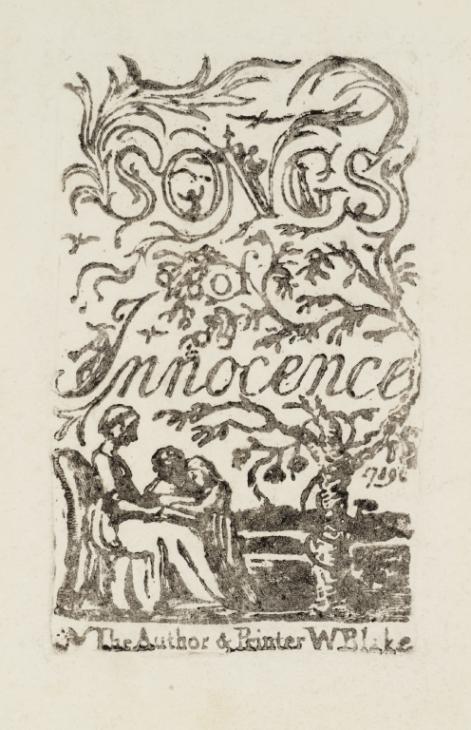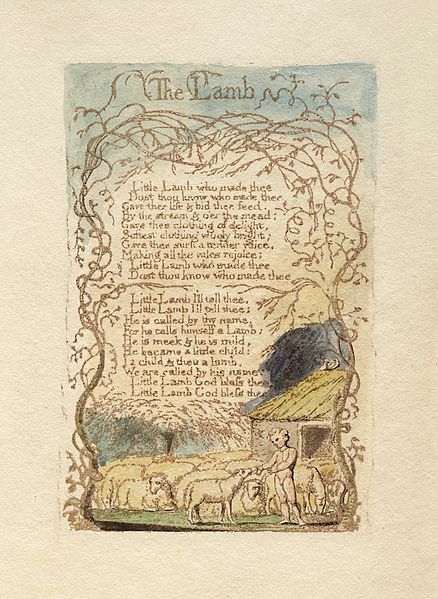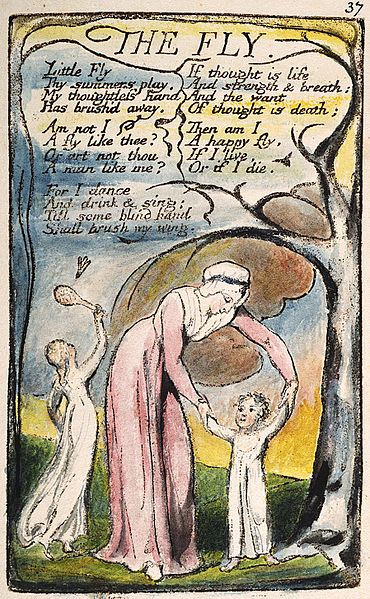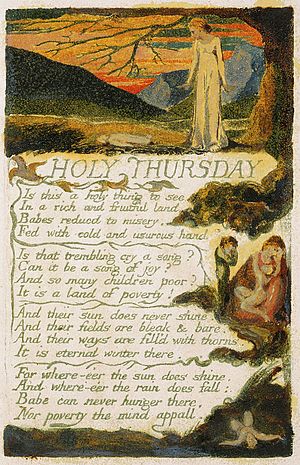Eugène Delacroix in 10 Paintings: Poetry, Passion, and Power
Early 19th-century French art was a battle between cool, crisp, precisely observed Neoclassicism and Romanticism’s passion for emotion, drama,...
Catriona Miller 3 July 2024
William Blake was undoubtedly a genius. And, as it usually happens with geniuses and people ahead of their time, he was scorned and disregarded by critics and fellow artists, many of whom considered him insane. Today, England recognizes his work as one of the greatest contributions to their cultural heritage, with his Songs of Innocence and of Experience read at schools. Let’s look closer at this collection of remarkable illustrated poems.

Blake, a mystic and a radical thinker, lived in the years leading to the French Revolution and its aftermath; a time of great social and political change. His work often examined social and political conventions and argued how repressive they were for natural human passions. As he put it in the subtitle of Songs of Innocence and of Experience, he wanted to investigate with his poetry “the two contrary states of the human soul,” which he mirrors in unsettling ambiguity in many of the poems.

The collection was accompanied by engravings hand-colored by Blake himself. The artist believed in the inseparable union between text and image, each being a comment on the other. Hence, the poems’ integration with the page and the engraving is, by no means; arbitrary. The first part, Songs of Innocence, was published in 1789 by Blake’s printshop and contained more gentle lyrics. Conversely, the Songs of Experience was a profound expression of adult corruption and repression and was a counterpart to the first book.

Blake made the books by hand, and as such; only a few copies exist. He invented a new way of printing by designing the work in reverse with varnish on metal plates, to later etch with acid to produce relief printing surfaces, which were subsequently printed in brown ink and colored by hand. Since Blake’s previous work was largely misunderstood, the poems were sold privately to friends and collectors.

Although Blake’s images show cute babies, animals, and flowers, and the poems have simple rhythms (referring to popular poetic forms for children in the 18th century), the Songs are not an easy read with a simple moral. With a satirical take on troubling reality, Blake presented subjects such as poverty, child labor, and abuse, demonstrating the repressive nature of the state and church and arguing that children should be treated as individuals with their own rights and desires. All these ideals were extremely novel and radical and reflected Blake’s avant-garde and visionary political beliefs.
If you are interested in browsing the entire publication, you can do so on the British Library’s website!
DailyArt Magazine needs your support. Every contribution, however big or small, is very valuable for our future. Thanks to it, we will be able to sustain and grow the Magazine. Thank you for your help!